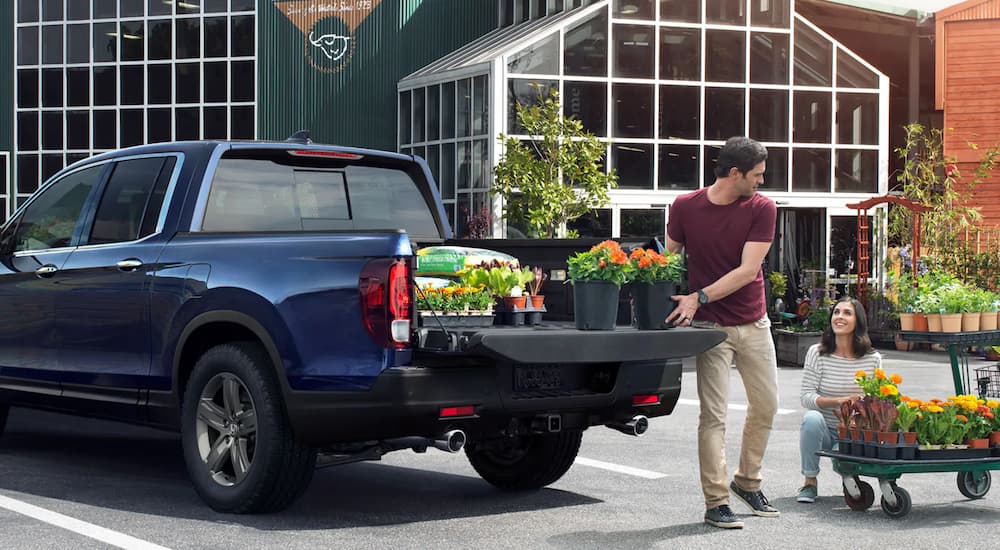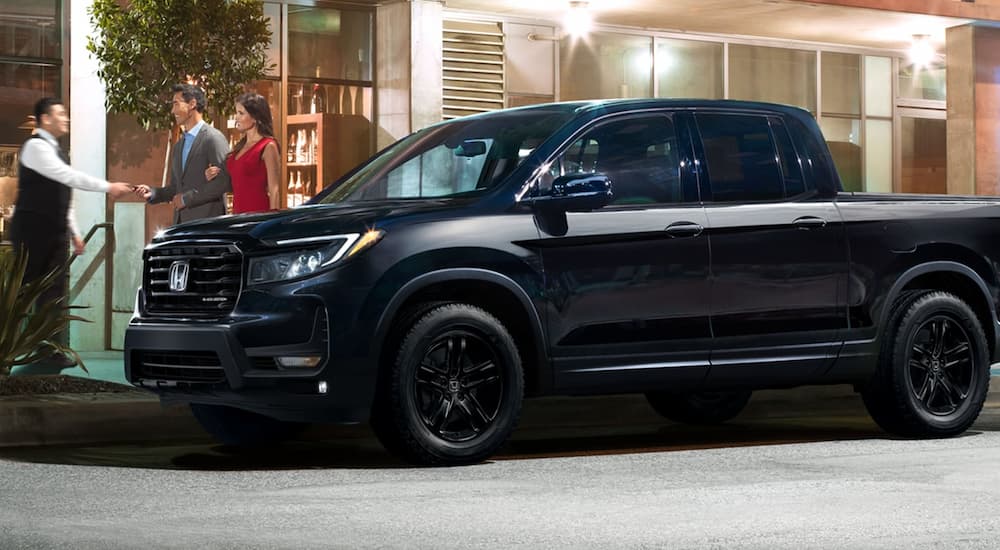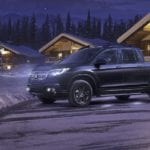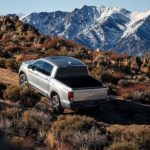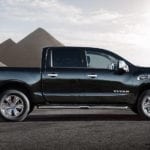First things first, to be honest, the Honda Ridgeline doesn’t have that many trim levels compared to some other models out there (the Silverado has way more than it needs), but I still can’t help but wonder if the ones it has are all really necessary. Because there’s only a single engine on offer, the differences between these models largely come down to their features. Is it necessary, then, that you can find four different trims at your local Honda dealer, and could things be simplified?
To understand what the Ridgeline has to offer and how these trims differ from each other (assuming they do), I’m going to take a good look at each one. We’ll briefly go over the Ridgeline in general and then dig into each of the four trims with an eye on their features and any key differences I can find between them. Then, we’ll be able to look at how these trims all compare to decide if they’re really needed or if it’s just a way to make some of them cost more than others.
The Honda Ridgeline Overview
The Ridgeline is a midsize truck, and it’s the only pickup in Honda’s lineup of vehicles – import brands aren’t known to offer a lot of trucks the way Chevy and Ford do, but others like Toyota have both a midsize and full-size option. As a midsize truck, you’re not going to find crazy amounts of power from the Ridgeline; it has a single engine available: a 3.5L V6 that delivers 280 hp and 262 lb-ft of torque, which comes paired with a nine-speed automatic transmission. Despite its small size, this engine comes with paddle shifters on the steering wheel, which makes it quite fun to drive.
Every Honda Ridgeline model comes with an Intelligent Variable Torque Management (i-VTM4) all-wheel drive (AWD) system, which is impressive for a midsize pickup. The Ridgeline has nearly 34 cu.ft. of cargo volume in its bed – just one cab size and bed length are available; every model can handle more than 1,500 lbs of payload, though they can vary a bit from 1,509 lbs at the low end to 1,583 lbs at its best. Honda has engineered the Ridgeline to be able to haul 5,000 lbs of weight behind it, which is its tow rating for every model, regardless of trim. With all of this in mind, let’s look at how the four trims for the Honda Ridgeline are different to see if they’re really needed.
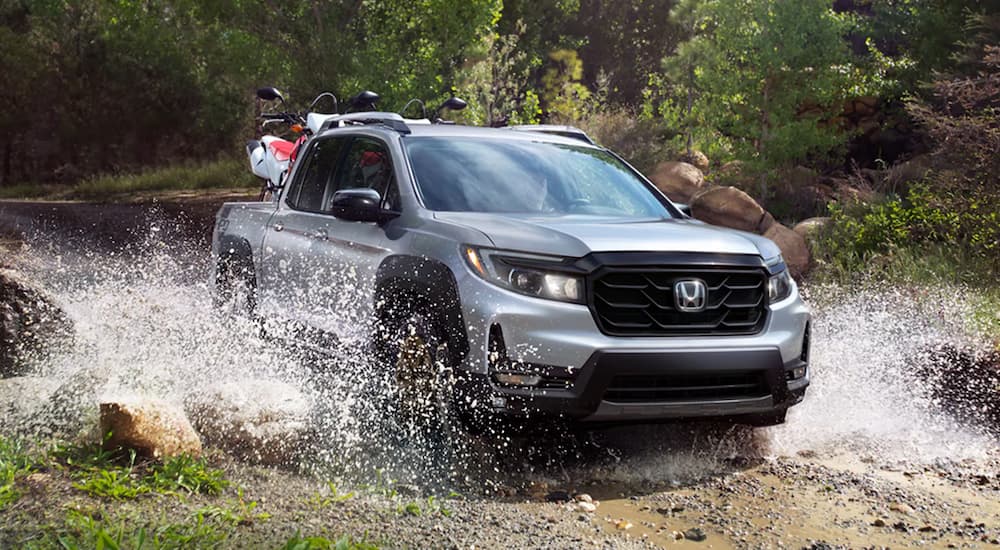
The Ridgeline Sport
The Ridgeline Sport is Honda’s starting trim for this pickup, and it features numerous standard options, such as basic truck-bed lights, remote entry, and body-colored door handles. All models have 18-inch wheels, including the Sport, and from the outside, they look a lot alike. Inside the Ridgeline is where you’ll find some differences: the Sport features basic map lighting, vanity mirrors for the driver and front passenger, and basic seating. Every model, including the Sport, comes with an 8-inch infotainment display, while the Sport has a seven-speaker sound system, including a subwoofer.
Standard safety features in the Ridgeline Sport are impressive and include the Honda Sensing suite of driver assistive features to help keep drivers safe on the road. This includes a collision mitigation braking system, road departure mitigation system, and adaptive cruise control. Other standard safety features include a lane keeping assist system, forward collision warning, and lane departure warning. The Ridgeline Sport has daytime running lights, a comprehensive airbag system, and much more.
The Ridgeline RTL
Moving up from the Ridgeline Sport to the RTL, we’ll find a lot of upgrades and additions – but are there enough to justify a change in trim? On the outside, the RTL gets a number of additional features, like heated side mirrors with turn indicators, an acoustic windshield, and a one-touch power moonroof. Inside, the RTL trim gains LED map lighting, rather than standard bulbs, plus illuminated vanity mirrors up front.
You’ll find a leather-wrapped steering wheel and an automatic-dimming rearview mirror inside the RTL, which aren’t included with the Sport trim. There’s a 10-way power adjustable driver’s seat with a two-position memory system, plus a four-way power front-passenger seat. This includes an upgrade to a leather-trimmed interior along with heated front seats for added comfort, though the entertainment system is much the same as the Sport. With the RTL, Honda adds a blind spot information system with cross traffic monitor to the safety features included on the Ridgeline.
The Ridgeline RTL-E
You could argue that the RTL-E is the highest trim level for the Honda Ridgeline, though the Black Edition costs more (we’ll get to that in a moment). With the RTL-E, Honda adds LED lighting for the truck bed, a programmable remote entry system, and chrome door handles. This trim level also adds power outlets to the truck bed, giving you power for devices. Seating is the same as the RTL, but this trim includes courtesy door lights up front and blue ambient LED lighting inside for an extra touch of sophistication.
While it has a leather-wrapped steering wheel like the RTL, the RLT-E’s wheel is heated. You’ll also find several other upgrades, including a wireless phone charger, a truck bed audio system that’s great for tailgating, and an eight-speaker premium audio system. Navigation is included with the RTL-E, along with HD Radio and additional USB ports inside. Safety features on the RTL-E are also upgraded with LED daytime running lights and the addition of front and rear Parking Sensors to help drivers maneuver at low speeds. This is, overall, a pretty decent addition of features in the jump from RTL to RTL-E.
The Ridgeline Black Edition
Now we come to the fourth offering for the Honda Ridgeline, and where, I feel, they go a bit overboard. The Black Edition has some interesting aesthetic touches like exclusive exterior details, a Black Edition leather interior with red contrast stitching, and black alloy wheels. It has body-color door handles rather than chrome, but otherwise has the same impressive features as the RTL-E, like the power outlets in its bed.
Inside, again its features are much like the RTL-E, with heated front seats, courtesy door lights, and ambient LED interior lighting – though the Black Edition has red lighting inside rather than blue (seems like it should’ve been called “Sith Edition” but maybe that’s just me). This model has the upgraded eight-speaker sound system, wireless charging pad, and other features like the RTL-E – along with its upgraded safety features. And yet, it costs more than $1,000 more than the RTL-E trim for a few aesthetic details.
Are Four Trims Necessary?
Honestly, I feel like the Black Edition is unnecessary – though I’m well aware that Honda is far from the only brand to offer special editions that add little beyond some details and extra cost. If we put the Black Edition aside and just view it as a special edition, then the lineup of the three basic trim levels makes a lot of sense. The increase in price from one to the next isn’t massive, but it makes sense, given the addition of features in each one. That being said, keeping the price of the starting Ridgeline trim under $39k is a smart move that makes it a very attractive prospect with solid features inside. The three real trims it has are just about perfect and provide a low-middle-high selection that creates great options for pretty much every midsize truck buyer.
